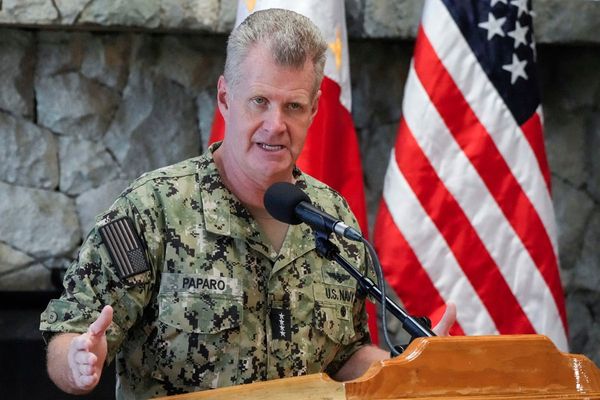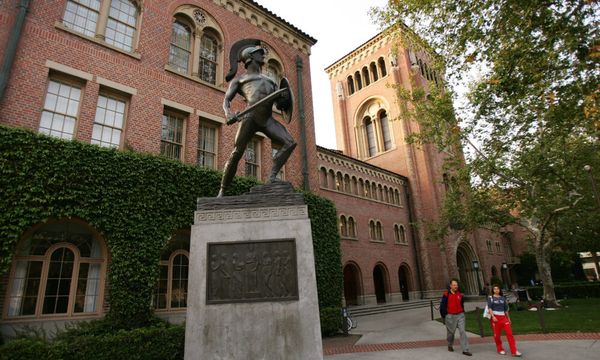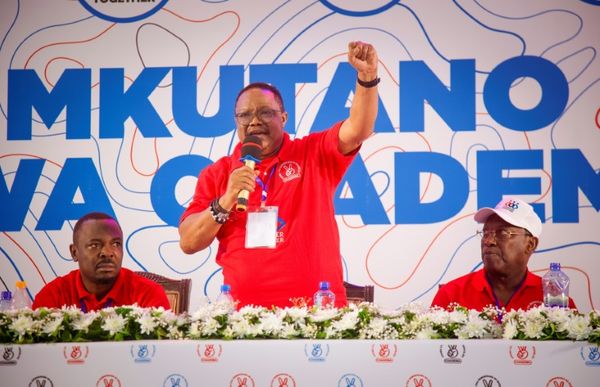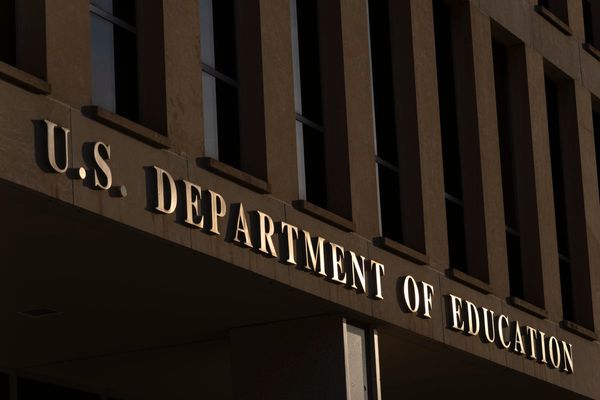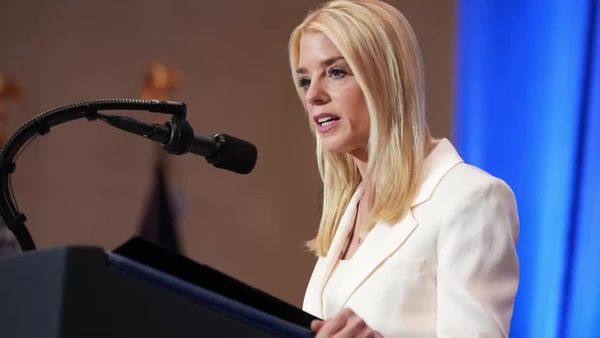
They say time heals all wounds, but the day Marco Simoncelli’s young life was tragically cut short in a horrible accident during the Malaysian Grand Prix in 2011 is a scar that still stings MotoGP a decade on.
Motorsport is often subject to ‘what-if’ scenarios, and one many MotoGP fans often ponder is: what would have happened had Simoncelli lived?
On 23 October 2021, he’d be nearing the end of his 12th season in the premier class – an elder statesman of a grid filled with fresh blood, ploughing the same tracks Simoncelli had when he made his MotoGP debut back in 2010 with the Gresini Honda squad. And what a trail he blazed.
Sport is built by the mavericks, the flamboyant personalities whom millions watching on feel instant, relatable connections with. Maybe they’re not always the most successful athletes, but they nevertheless capture minds and hearts, as well as drive television ratings. Simoncelli was a maverick, the ultimate made-for-TV sporting icon.
A lanky frame topped off by big hair, with the charm of a cheeky schoolboy, and a demonic talent on a motorcycle, Simoncelli oozed cool. When the BBC aired its tribute package to Simoncelli in the wake of his death, it was fitting they used the music of Jimi Hendrix to illustrate his personality on and off the track.
“First time I saw him I think was in Jerez, he was still racing in the 125cc with Aprilia,” recalls Hiroshi Aoyama, Simoncelli’s team-mate at Gresini in 2011, in conversation with Autosport.
“I remember he was really tall, but he was putting his elbow [down], his knees [down], bending, trying to be small in the bike and he was very fast in Jerez. I think he set a lap record. In these days I was already in 250cc, but I was watching this guy and I was thinking ‘woah, this guy is fast'.”

Simoncelli had marked himself out as a prodigious talent at home in Italy in mini-bikes, and later in 125cc road racing before expanding his reach at European level. He was given his 125cc grand prix debut at Brno in 2002, finishing an underwhelming 27th on an Aprilia. But he made his full-time debut in 2003, scoring points on a semi-regular basis before winning a wet Jerez race in 2004 – having taken his first pole the day before – when Casey Stoner crashed out in front of him.
It would be his only podium that year, but solid consistent top seven results meant he capped off the year with 79 points in 11th, scoring almost 100 more in 2005 when he won again at Jerez and scored five other podiums to finish the campaign fifth.
He stepped up to the 250cc class in 2006, but it wasn't until 2008 that he really kicked on – and in dramatic fashion.
“We also had a lot of times close, close action,” Aoyama says of one of his chief rivals in the 250cc class. “He tried to push me out many times. Many riders complained, also me - I complained because it was sometimes a bit too much. But it wasn’t just one rider saying this, it was everybody. It was very obvious he was not so clean sometimes.”
"If he wanted to win, he would do whatever he can do. This was the same thing that happened in 250cc times that happened in MotoGP. It’s a little bit of a pity because if he didn’t do this, he could have been more appreciated or respected from other riders" Hiroshi Aoyama
Simoncelli’s first win in the class came at Mugello shrouded in controversy in 2008, the year he won the championship. Heading onto the penultimate lap on the main straight, Simoncelli moved over on Hector Barbera and ended up making contact with the Team Toth Aprilia rider’s front brake lever. Barbera was sent over the top his machine in a frightening incident (pictured below). Simoncelli escaped punishment, but was later given a verbal warning by MotoGP Race Direction.
But aggression became something that defined Simoncelli’s racing and courted major controversy when he moved into MotoGP. Jorge Lorenzo proved to be one of the Italian’s biggest critics, the pair’s fractious relationship coming to a boil after qualifying at Estoril in 2011, when the Yamaha rider beat Simoncelli to pole.
Lorenzo was left incensed by contact at Valencia in 2010 after a hard battle with Simoncelli early in the race, and wasn’t shy about making his feelings on Simoncelli’s aggressive style known to the world’s media.

As Lorenzo at Estoril warned there would “be a problem” if something happened with Simoncelli in the future, to which the Italian responded: “Okay, then I will get arrested...”
The media room erupted into laughter, but Lorenzo (not unsurprisingly) didn’t see the funny side. The pair would collide again at Assen, when Simoncelli crashed out trying to overtake the Yamaha rider for the lead and wiped Lorenzo out with him. A few rounds earlier, Simoncelli had a collision with Dani Pedrosa at Le Mans that left the factory Honda rider with a broken collarbone and Simoncelli with another critic.
“This was not only in MotoGP - when he was riding in 250s, it was basically the same,” Aoyama points out. “In the last moment, if he wanted to win he would do whatever he can do. So, this didn’t change and this was the same thing that happened in 250 time that happened in MotoGP. It’s a little bit of a pity because if he didn’t do this, he could have been more appreciated or respected from other riders.”
And those criticisms continued to mount. Lorenzo’s comments held some weight, as a partisan Barcelona crowd greeted Simoncelli with an obnoxious chorus of booing come the 2011 Catalan GP. But Simoncelli did the most Simoncelli of things: he put his Gresini Honda on pole. That Sunday wouldn’t be the day he’d make his podium debut, but it proved Simoncelli’s laid back personality really wasn’t a front.
“I think finally he didn’t care, because if he cared he’d [have] changed,” Aoyama adds when asked if the negative feedback Simoncelli's riding received had any effect on him. Aoyama also believes it was this aggressive style that made Simoncelli so quick: whether his on-track antics were right or not, it was a view that varied.
What was clear was how well-suited Simoncelli was to MotoGP. The bigger machines were better married to his large frame. “He could really use his ability he had, he had a definite advantage in this,” Aoyama observes, “so I think he really enjoyed MotoGP. I could see that.”
And for 2012, the move away from the smaller 800cc bikes to the bigger, blood-and-thunder 1000cc formula would almost certainly have allowed Simoncelli to reach a new level in the premier class. In 2009, as a wildcard at Imola aboard an Aprilia, the then-250cc racer muscled an RSV4 World Superbike to a maiden podium in the class after mugging temporary team-mate Max Biaggi. And for 2012 in MotoGP, he would be getting a factory-supported RC213V in Gresini colours.
“I think for 2012 Marco had a great chance to race with the factory Honda, with the 1000cc, which was a bike that was better for the weight and dimensions of Marco,” said Simoncelli’s close friend Valentino Rossi recently. “I think he could have fought for the championship and I think we could enjoy it a lot.”

Aoyama concurs with Rossi’s view: “Mostly you need luck to win a title. [At] this time we had [Casey] Stoner, Valentino, Dani, [Andrea] Dovizioso, Lorenzo – all super-talented riders. Of course, he was inside of this [group]. For sure he could have fought for the championship, 100%, but to win it nobody knows.”
Despite all of the issues he faced in 2011, Simoncelli cracked the top six on 10 occasions that year – no mean feat when you consider he was on a satellite Honda in an era when only a factory RC213V or factory Yamaha won a race. He came agonisingly close to a maiden win at a wet Jerez race when he crashed out, but at Brno later that year he guided his white and red Gresini bike to third to finally break his podium duck. At Phillip Island in October, he took a step closer to victory with second.
Oh, what fun 2012 would have been…
A week later, aged 24, Simoncelli’s story ended. On lap two of the Malaysian GP at Sepang – which eerily, as his father Paolo would point out some years later, bore the same SIC abbreviation as his son carried on his leathers – Simoncelli crashed while running fourth.
"I miss him a lot. I think my Academy is in his honour because the first rider that we helped was Marco. So, this is for him. We’d prefer to have Marco with us, but it’s what we can do"Valentino Rossi
He tucked the front of his bike through the Turn 11 right-hander, a crash that should have seen him slide to the outside of the track and left a frustrated figure picking his motorcycle out of the gravel trap.
Instead, Simoncelli veered back right and into the path of Rossi and Tech3’s Colin Edwards. There was nothing anyone could have done to stop that horrible collision from happening. Simoncelli died from his injuries less than an hour after the crash, having had CPR administered to him for 45 minutes.
“I saw him go outside, but he continued on the bike,” Aoyama recalls of that awful moment, a memory that clearly pains him to this day. “At some point he started to go to the inside, so I decided to go to the outside, so I didn’t get involved. But Colin and Valentino decided to go to the inside. I didn’t see exactly the moment, but I remember exactly the last moment.
“I didn’t expect these two riders to hit Marco. I just saw those two go to the right side, I was lucky I didn’t see exactly what happened. Then I saw suddenly the red flag, then I come back to the box. I didn’t expect it was so bad. Then finally, Carmelo [Ezpeleta, Dorna CEO] came to talk to every rider and at this moment I understood it was so bad.”

The 2011 season was this writer’s first watching MotoGP. I remember crying uncontrollably when Simoncelli – my first MotoGP hero – was first reported as having died from his injuries.
A moment of silence is the usual course of action at the event following a tragedy. But, Simoncelli wasn’t a conventional rider, and nor was his tribute. At the request of his father, a minute of silence was to be replaced by a minute of noise for Simoncelli ahead of the final round at Valencia. On Sunday morning, the entire MotoGP, 250cc and 125cc grids took to the Ricardo Tormo Circuit for a parade lap, while Simoncelli’s hero - 1993 500cc world champion Kevin Schwantz - rode the Gresini Honda bearing that bold red #58.
Simoncelli’s death cut the motorsport world deep. Lotus Formula 1 driver Jarno Trulli wore a replica Simoncelli helmet at the 2011 Indian Grand Prix, while Loris Capirossi contested his final MotoGP race at Valencia carrying the #58 on his Pramac Ducati.
Simoncelli's home circuit of Misano was renamed in his honour in 2012, where in 2013 his great friend Rossi ran a helmet design based around Pink Floyd's 'Wish You Were Here'. In 2013, Simoncelli's hometown of Coriano established a monument in his honour, with a flame lit for 58 seconds every Sunday. His father Paolo set up the SIC58 Squadra Corse in 2013 to initially help young Italian talent in the CIV series in Italy, before expanding into the CEV Junior World Championship in 2015, and finally into grand prix racing in Moto3 in 2017.
And in Rossi’s VR46 Riders’ Academy, all of its successes are very much a tribute to Simoncelli.
“I miss Marco a lot,” Rossi said. “First as a friend, because he was really, really funny and we had great times together because with him it was always very funny. We miss him as a rider also. On the other side, I think my Academy is in his honour because the first rider that we helped was Marco. So, this is for him, but it’s not a big thing. We’d prefer to have Marco with us, but it’s what we can do.”
Ten years on from his death, remembering Simoncelli is still heart wrenching. He was immeasurably gifted, but it’s hard to deny that he was also flawed in how he went racing. Yet, he was exactly the kind of rider who – with a bit of refining – could have been utterly devastating. Mix that with his deeply cool image, you could argue he was set to be MotoGP’s poster boy for the post-Rossi era.
But as time goes on, pondering the what-ifs becomes senseless. Maybe now, 10 years on, we just remember the big hair, the big smile and the hours of joy watching the #58 brought us in his far too brief time on a motorcycle.

